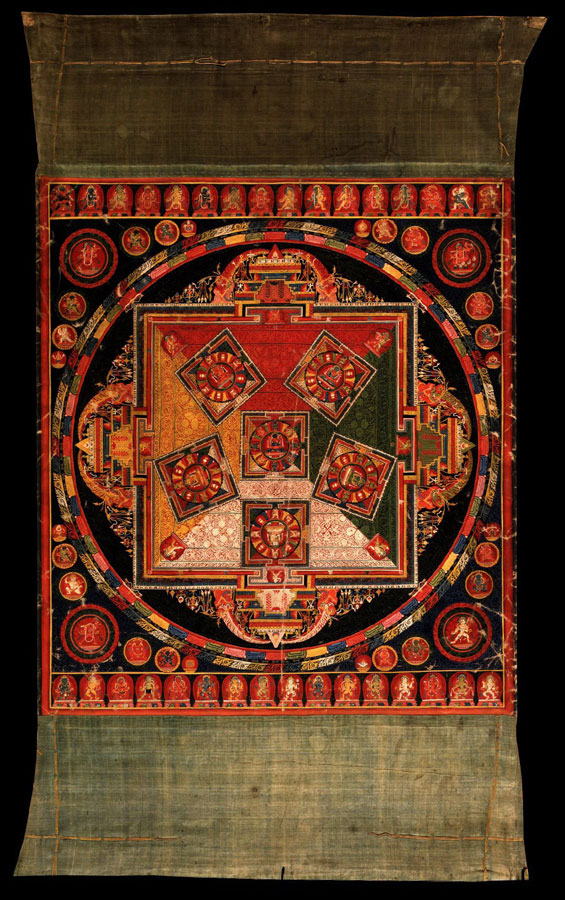previous image | Marvels of the Malla Period main exhibition | next image
Satchakravarti Samvara Mandala |
Although Shakyamuni, the historical Buddha, is recognized as the fundamental teacher and propagator of Buddhism, Vajrayana Buddhists believe that there are many buddhas in addition to Shakyamuni. This complex diagram brings together the most important buddhas in the Vajrayana Buddhist system. The elaborate geometric design of intersecting circles and squares is known as a mandala; it represents both a diagram of the palaces of these buddhas and the sacred cosmos. Adorning each side of the largest square structure are four elaborately designed and jewel-encrusted gateways, which lead to the increasingly more powerful inner chambers. At the center of this composition are smaller mandalas, each with its own gates, attendants, and ritual offerings. The five outer mandalas represent the homes of the five transcendent buddhas; the central buddha figure in each of these structures is rendered in a distinct color and joined in sexual union with his consort. These five mandalas are purposefully situated around one central mandala, that of Vajradhara, the embodiment of all five transcendent buddhas. Click here to view full image (1255 × 2000 pixels, 785 KB) all text & images © The Philadelphia Museum of Art |
previous image | Marvels of the Malla Period main exhibition | next image

